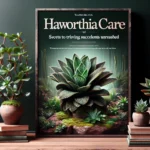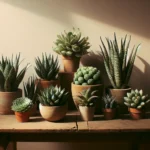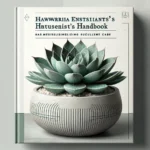Unraveling the Mystery of Fasciated Haworthia
Have you ever stumbled upon a Haworthia that looks like it’s been lifted from the pages of a whimsical storybook? That’s the rare and captivating fasciated Haworthia, a quirky twist on the typical rosette pattern we’ve come to know and love. This extraordinary form, sometimes playfully referred to as the “Cristate” or “crested” Haworthia, is where the plant enchantingly morphs into wavy, ribbon-like growths—an unpredictable masterpiece crafted by nature.
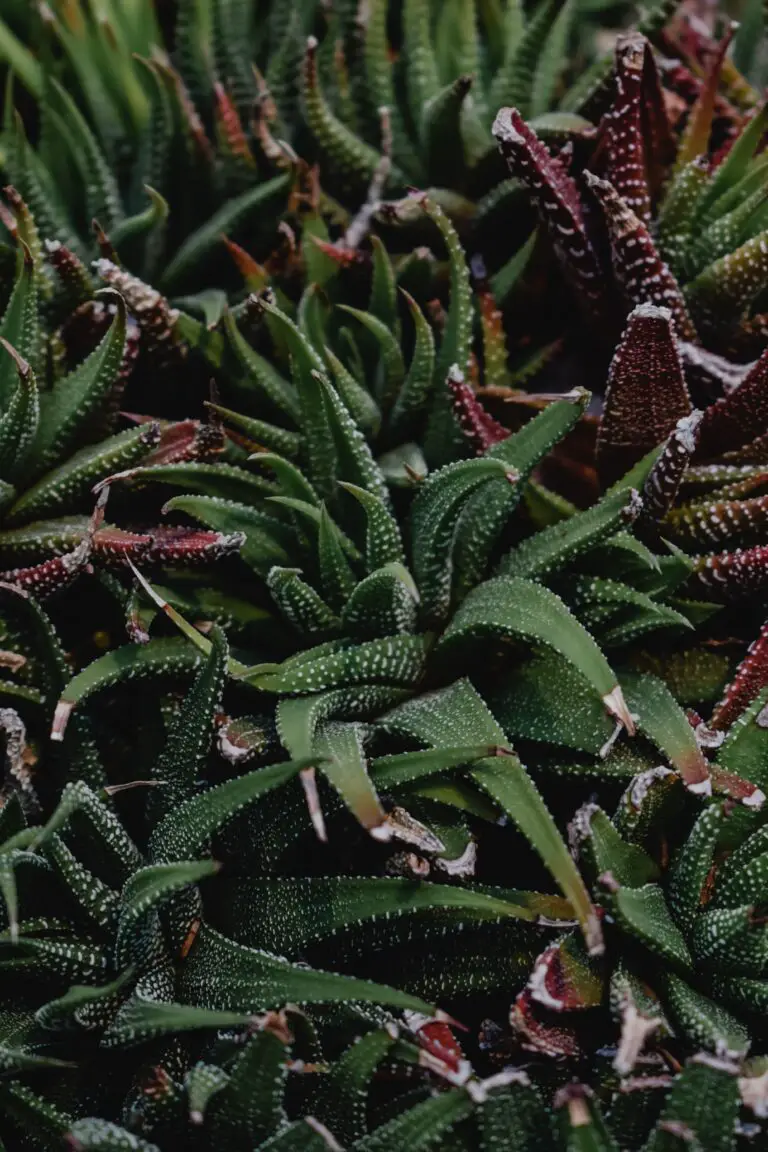
But what’s behind this fascinating phenomenon? While the precise causes of fasciation remain under a shroud of mystery, it’s often attributed to a mutation or hormonal imbalance within the plant. Imagine a cellular detour that diverts the typical growth pattern, leading to flattened and elongated stems. The resulting fan-shaped formations lend a surreal aspect to these already distinctive succulents, making them an utterly unique addition to any indoor garden.
Lovers of the peculiar, gardeners with a taste for the unusual, and everyone in between are drawn to fasciated Haworthia. It’s not just about collecting plants; it’s about harboring a piece of botanical oddity in your own living space. Given its scarcity, coming across one is truly a stroke of luck, akin to finding a four-leaf clover in an endless field. It’s easy to see why this bewitching aberration casts a spell on those who appreciate the diverse expressions of nature’s flora. Though we may not solve the enigma of fasciation anytime soon, its allure lies in its profound uniqueness—an anomaly that interrupts the ordinary, defiantly celebrating the beauty of diversity.
Haworthia’s Rarity and Appeal to Enthusiasts
The rarity of fasciated Haworthia only heightens the intrigue. Unlike their traditional counterparts, which quietly grace countless shelves with their subdued elegance, these crested characters are the showstoppers, the conversation starters—the botanical equivalent of a treasure chest waiting to be unearthed. It’s akin to discovering an entirely new plant species from the comfort of your own porch or windowsill.
Enthusiasts revel in the opportunity to nurture such a living rarity. There’s a thrill in the anticipation of each new leaf’s emergence—will it continue in its standard spiral or venture off the beaten path into an expanse of spectacular waves? This uncertainty is the heart of its charm and fuels the passion of plant lovers who eagerly share their experiences and care tips across communities, bonding over the shared love for Haworthia’s unmatched individuality.
No two fasciated Haworthia are the same, and that’s the puzzle that keeps both the novice plant lover and the seasoned horticulturist eternally intrigued. These succulents teach us to embrace variations, to find beauty in the atypical, and inspire us with their resilience and adaptability. So, while we may refer to it as “fasciated,” perhaps a better term is “fascinating,” for it captures the hearts of all who are fortunate enough to witness its spellbinding growth.
Visual Guide to Identifying the Fasciated Haworthia
Meet the Fasciated Haworthia—a quirky character in the succulent family that’s certainly worth a spotlight in your home garden. But what exactly sets this succulent apart? Well, let’s dive into the delightful world of this green eccentric!
For starters, the Fasciated Haworthia is known for its distinctive stem structure, often thicker than the standard Haworthia. Some enthusiasts affectionately compare it to a plump caterpillar lazily lounging beneath the sun—quite the amusing image for a plant, don’t you think?
Then, there’s the leaf show—oh, what a visual treat! In the fasciation fascination, leaves often take on intriguing flattened shapes, displaying a broad and sometimes crested appearance. Imagine the leaves splayed out like a hand of cards, with each one daring to be different. The texture? It can range from smooth, waxy finishes to uneven, bumpy ridges that beg for a curious touch.
Have you ever seen something in nature and thought, “Did it eat too much, or is it just happy to see me?” That’s the vibe you get from this plant. It weaves a curious tale through its unusual growth formations, telling stories of environmental plot twists that ultimately lead to its fascinating form.
But don’t just take my word for it; why not see for yourself? Take a peek at this informative video showing a close relative of the Fasciated Haworthia being repotted and pampered, giving you a glimpse of the care these special succulents crave.
If you’re seeking to become an astute observer and gardener of succulents, understanding the quirks and perks of different species is key. When it comes to the Fasciated Haworthia, you’re embracing a living oddity that promises to enrich your collection with its exceptional form. So, the next time you stroll through your succulent sanctuary, give a little nod to nature’s playful side as displayed by this endearingly peculiar plant.
Fascination with Fasciation: Understanding the Biology
Imagine walking through your garden and spotting a Haworthia with its leaves fanned out in a bizarre, ribbon-like formation, quite unlike the typical rosette structure we all adore. This peculiar and rather striking anomaly is known as fasciation, and it’s not just a whimsical twist of nature; it’s a lesson in plant biology waiting to be understood.
At the heart of fasciation lies an unusual development in the apical meristem, a plant’s fountain of youth and the source of its growth. Here, under normal circumstances, cells divide in a controlled fashion to give rise to new leaves, stems, and flowers. But when fasciated, this orderly division takes a detour, leading to the flattened and elongated structures that make fasciated Haworthia a curiosity among plant enthusiasts.
What triggers such botanical eccentricity? Studies and real-life observations suggest a myriad of potential culprits, from genetic mutations to bacterial infections, even environmental factors like frost or physical damage to the plant’s growing tip. The result? A plant that’s morphed into an extraordinary version of itself, challenging our expectations of growth and form in the verdant realm.
Tips for cultivating Haworthia at home often skim over the possibility of fasciation, focusing on the typical care these succulents demand. But for those keen on the whims of nature, a fasciated Haworthia can be a prized anomaly, demonstrating nature’s ability to deviate from the blueprint and still flourish.
To really grasp the wonder of fasciated Haworthia, let’s broaden our understanding with a video that, although not specifically focused on fasciation, showcases the resilience and adaptability of these plants:
As with many natural oddities, there’s much more to learn about the whimsical world of fasciation. It’s an open invitation for gardeners and scientists alike to dive deeper into the biological enigma, which, in turn, promises to shed light on the complex tapestry that governs plant growth and development.
The Art of Growing Fasciated Haworthia
Delve into the world of fasciated Haworthia, a delightful oddity, and discover the secrets to nurturing these unique houseplants. Unlike your average succulent, fasciated Haworthia plants demand a specific touch — a blend of attentive care and understanding that will transform your green companions into thriving, sculptural marvels.
Start with a blueprint for success: quality, well-draining soil perched in a pot that speaks of character as much as functionality. Haworthias are not just plants; they’re living art installations that paint strokes of green on your garden canvas. And speaking of paint, their water requirements are like the delicate touch of a brush—water them sparingly, as their juicy leaves store ample reserves. Wait until the soil is utterly dry before giving them a drink. Overwatering is their kryptonite, so resist the urge to quench their thirst too often.
Imagine a sun-drenched savanna — this is the light that fasciated haworthias revel in, bright yet soft and dappled. Avoid placing them in the harsh glare of the midday sun, as their intricate patterns can fade under unrelenting rays. Instead, favor a location that bathes them in the bright, indirect light, simulating the shadows cast by rocks and shrubs under which they naturally grow.
Despite their exotic appearance, fasciated Haworthia plants are surprisingly low-maintenance and adapt well to life indoors. Through the seasons, they’ll require you to play the keen observer, adjusting their care routine as they seamlessly shift from active growth to their rest periods. For more in-depth guidance on these succulent sensations, consider this comprehensive guide that might just hold the key to unlocking their full potential.
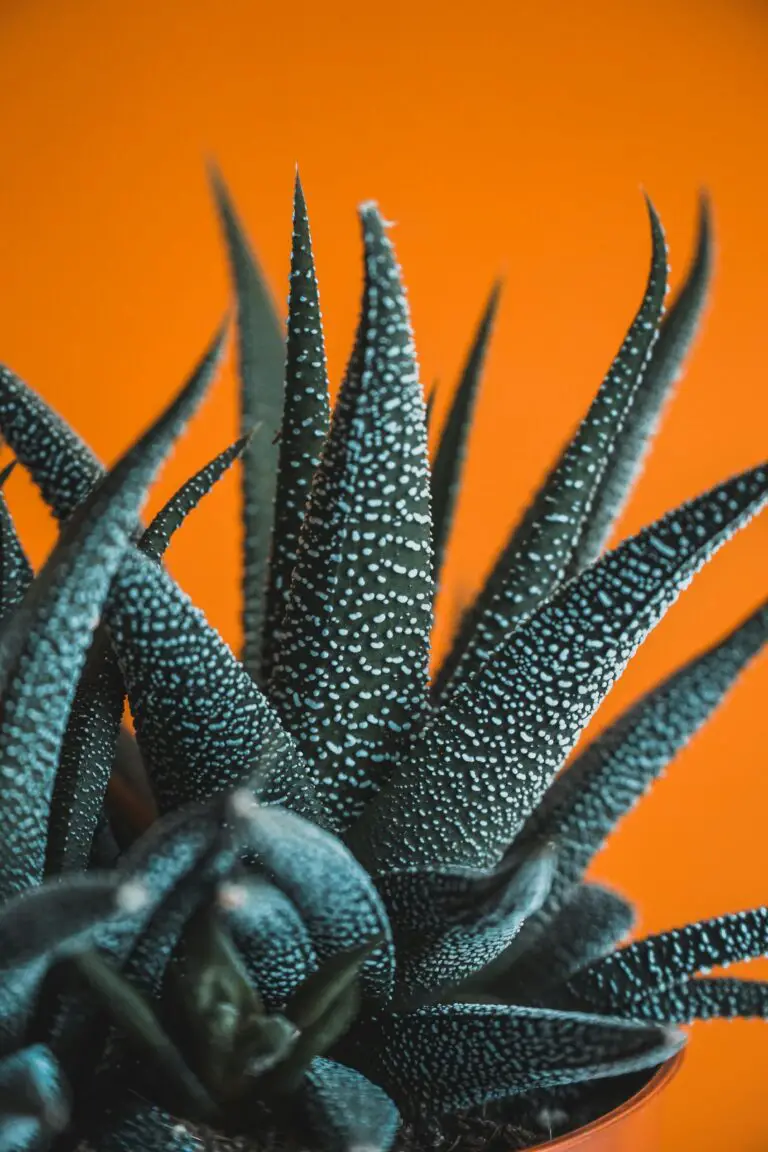
Maintenance is not just about the day-to-day. It’s about the bigger picture—ensuring that your fasciated friends are set for the long haul. Occasionally, split overcrowded clusters to give each rosette the space to flaunt its growth. Propagation is both a utility and a novelty; by separating offsets, not only do you bestow upon them a new home, but you also invite beginners to partake in this rewarding gardening venture.
A final tip from the green-thumbed aficionado: patience. Growth is a meditative process, a gentle unfurling of life over weeks and months. Monitor their progress, celebrate each new leaf, and witness the living tapestry that fasciated Haworthia weaves through your garden narrative. With each moment of care, you’ll find that these bewitching succulents aren’t just plants—they’re a testament to the artistry of nature and the joy of home gardening.
Propagating Your Own Fasciated Haworthia
Envision a mini jungle on your windowsill, with an array of quirky strap-shaped leaves that look as if they’ve decided to defy all plant norms. That’s what you get with fasciated haworthia—a botanical anomaly that adds a dash of the extraordinary to your indoor garden. Let’s delve into the riveting journey of propagating your very own fasciated haworthia. With a sprinkle of patience and the right know-how, you’re set to multiply this enigmatic conversation starter.
Pondering how to spark that lush fasciation in your new plants? The secret sauce could be in the blend of genetics and environment. Start by choosing a healthy fasciated mother plant. Remember, although there’s no guaranteed recipe for fasciation, starting with a fasciated specimen ups your odds tremendously. Now, carefully split the pups or offsets from the main plant—these are the mini-me’s of your haworthia and your ticket to propagation paradise.
When it comes to the act of planting, think simplicity. A well-draining succulent mix is your best bud, making sure those tender little roots don’t come face to face with any soggy nightmares. Gently nestle the offsets into their new homes, and whisper sweet nothings as you ensure they’re nice and snug, with just the right amount of soil contact. Moderate watering after planting is crucial; after all, we’re not looking to recreate the Pacific Ocean in their pots.
Upping Your Fasciation Game
A dash of sun, a whisper of water, and voilà, you’re on your way to fasciation city, right? Not quite. The environment plays a crafty co-conspirator in your fasciated creation. Think Zen garden levels of tranquility—stable temperatures, medium to bright indirect light, and the kind of humidity that suggests a gentle dew rather than a tropical monsoon. It’s Mother Nature’s magic, but indoors. Observing your haworthia’s response is key; dial up or down the care to strike that delicate balance they cherish.
Ever stumbled upon a serendipitous garden surprise? That sense of wonder fuels many green thumbs to play the mad scientist in the quest for fasciation. From whispered garden lore, it’s said that minor stress—be it a gentle nick here or a calculated snip there—may just invite the eccentricity that is fasciation. Real-life whisperers of the green realm, however, will tell you that fascination with fasciation requires a dance with chance. It’s an art as much as a science, with a smidgeon of luck sprinkled on top.
There you have it, your roadmap to propagating fasciated haworthia. It’s a venture of experimentation, nurturing, and a fair bit of crossing fingers. Whether you’re graced with a quirky fasciated offspring or a brigade of traditional haworthias, the journey itself is lined with the satisfaction of growth, both for your greenery and your inner gardener. So, sow your offsets, let them groove to their environmental tunes, and watch the marvel of nature unfold on your very home turf. And remember, each new fasciated haworthia is a mesmerizing masterpiece; a verdant stroke of luck caught in your own pot of soil.
Design and Display: Styling with Fasciated Haworthia
As you contemplate adding a stroke of genius to your home garden, consider the peculiar charm of fasciated haworthia. This succulent, admired for its whimsical form, plays the part of a natural sculpture—a true decorator’s delight. Let’s unwrap innovative ways to showcase this botanical gem and bring new dimensions to your living spaces.
Imagine a rustic wooden shelf, each space graced with the architectural lines of fasciated haworthia. Whether standing alone or mingling amongst verdant companions, the plant’s curious shape draws the eye, creating an organic focal point. It’s like having a piece of modern art without the hefty price tag; except, this one thrives on your tender care and attention.
The living room could benefit from these striking succulents, too. Picture a low-lying coffee table boasting a sleek terrarium. Inside, fasciated haworthia takes center stage, surrounded by a selection of stones and moss, akin to an avant-garde installation that sparks conversation and admiration.
For the balcony or patio, why not construct a green wall? Offset terracotta pots filled with fasciated haworthia among a tapestry of lush greenery. The result? A vertical marvel that not only serves as a privacy screen but a talking point with every upward glance.
In your garden, let’s go beyond traditional borders and pots. Intersperse fasciated haworthia amongst rockeries or along a pathway, their star-like form juxtaposed against soft ground covers and pebbles. It’s a visual symphony, a creative interplay of textures and shapes that elevates the everyday garden stroll.
Don’t have outdoor space? No problem! The kitchen windowsill presents a sunny stage for these little performers. Line up a series of clear glass jars, each harbouring a fasciated haworthia, and witness how sunlight transforms their leaves into translucent, emerald-hued wonders.
Finally, take a moment to appreciate the solo performance of this succulent in a minimalist setting. A single, well-potted fasciated haworthia on a stark white plinth transforms into a living sculpture that resonates with quiet sophistication. It’s a testament to the fact that sometimes, less is truly more.
As you explore the realm of home decor, remember that the fasciated haworthia isn’t just a plant—it’s a piece of natural art that holds the power to revolutionize your habitat. Whether in the spotlight or playing a supporting role, it’s a versatile protagonist in the theatre of design.
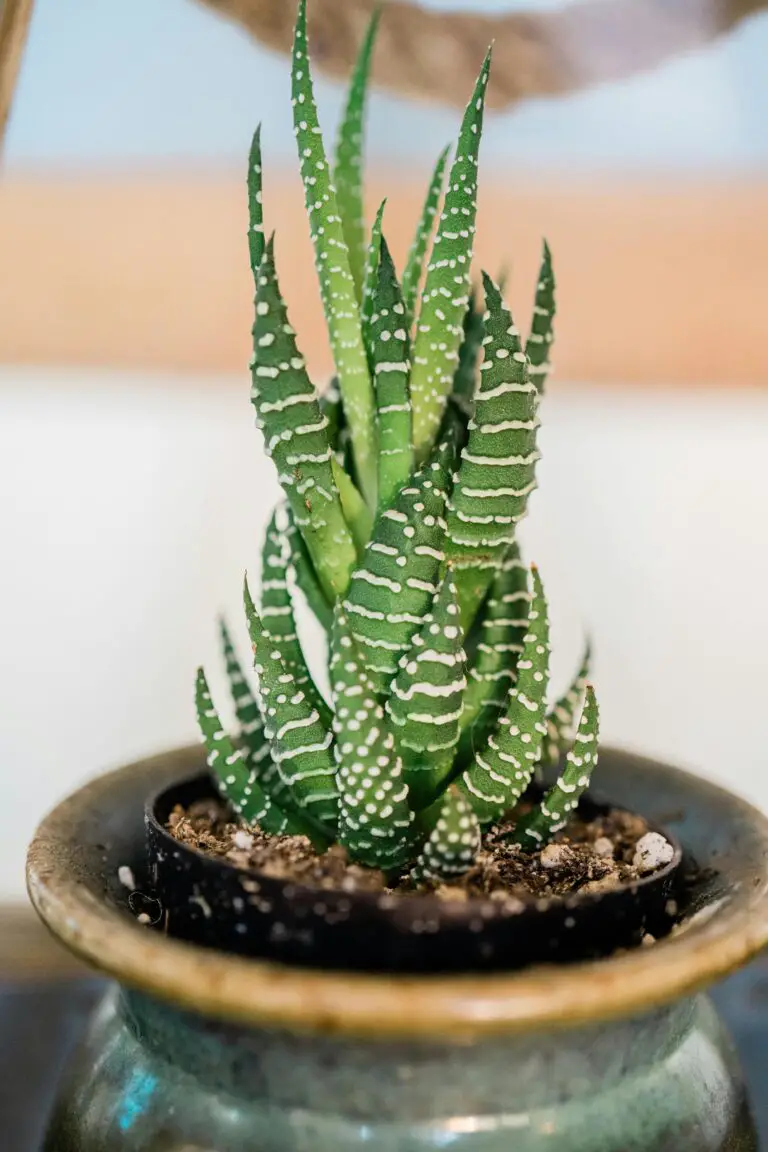
Preventing Problems: Pest Control and Disease Management
The fasciated haworthia is not just another succulent; it’s a botanical wonder with its ribbon-like, crested form spiraling from the soil—an extraordinary deviation from the norm that captivates plant enthusiasts. Despite its hardiness, this peculiar plant can face several challenges, particularly when it comes to pests and diseases. However, with the right eco-friendly strategies, you can ensure that your fasciated haworthia remains a healthy and striking focal point in your home garden.
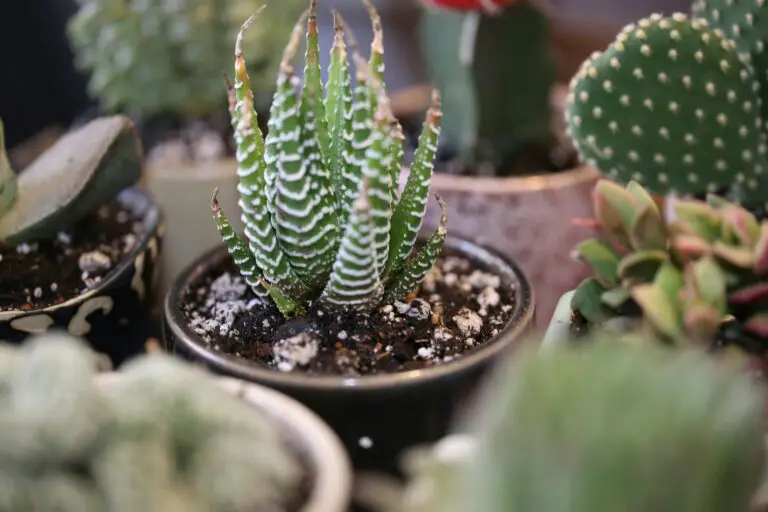
Imagine you’ve nurtured your succulent sanctuary and suddenly, you spot the tell-tale signs of mealybugs: cotton-like clumps nestled snugly in the crevices of your plant’s unique formation. Before panic sets in, let’s confront it with a blend of simple dish soap mixed with water. This gentle yet effective combatant, when applied with a soft brush, can assist in displacing these unwelcome guests, keeping your fasciated wonders unblemished and unbothered.
Another invader, the dreaded spider mite, may spin fine webs and leave your haworthia looking lackluster. But fear not, for the humble neem oil comes to the rescue. This natural, non-toxic oil serves as a triple threat, acting as a pest repellent, miticide, and fungicide. A fortnightly spritz will not only deter these tiny nuisances but also shield your plants from a range of fungal afflictions.
Fungal infiltrations, such as root rot, can catch any gardener off-guard and can turn a healthy specimen into a wilted shadow of its former self. An eco-conscious approach to preventing such diseases begins with proper watering techniques. Overwatering is the foe of fasciation; thus, always ensure your haworthia is planted in well-draining soil and only water when the soil is thoroughly dry. For those infrequent occasions when overwatering occurs, cinnamon—a natural antifungal spice—can be sprinkled across the topsoil to arrest the onset of root rot and keep your haworthia standing tall.
With these eco-friendly pest control and disease management tips, you can relax, knowing you’ve armored your fasciated haworthia against home garden hurdles with sensitivity and sustainability.
Joining the Community: Resources and Connections
Stepping into the world of fasciated haworthia isn’t just about admiring their quirky, ribbon-like growth—it’s an invitation to join a buzzing community of enthusiasts. Picture this: a sunny Sunday market where collectors chitchat over rows of potted oddities, or an online forum that buzzes late into the night with care tips and propagation triumphs.

Whether you’re looking to add to your collection or start one, there’s no shortage of nurseries and exotic plant shops that celebrate the beauty of these succulents. Have you ever visited a botanical garden gift shop? Quite often, they’re treasure troves for fasciated varieties, with knowledgeable staff to boot. But let’s not overlook the power of the internet—e-commerce sites are bustling with sellers who specialize in the rare and the beautiful, including fasciated haworthia.
Sharing experiences is the backbone of this hobby, and social media groups are the perfect landscape for this. Facebook, Reddit, and even Instagram pages are riddled with posts of proud plant parents showcasing their fasciated finds. Want to know the secret to a perfectly perky haworthia? Just send a picture to one of these groups and brace yourself for a surge of friendly advice.
For those who love the thrill of in-person exchanges, local horticultural clubs and meetups offer a charm that digital spaces can’t replicate. Imagine swapping stories and succulents with someone who becomes not just a fellow enthusiast. but a friend. It’s these connections that cultivate a community where ‘fasciated’ becomes more than just a plant—it becomes a shared passion.
Frequently Asked Questions
Got a twisty, peculiar succulent in your garden? Chances are, you’ve encountered the remarkable fasciated haworthia. This little plant, with its ribbon-like growth and striking appearance, has stirred up quite a curiosity among home garden enthusiasts. But don’t let its odd form intimidate you! We’re here to untangle the mystery of caring for this unique green buddy. Let’s dive into some real-life questions from fellow plant aficionados!
How do I care for my fasciated haworthia?
Caring for these quirky plants is similar to looking after their non-fasciated cousins. They love bright, indirect sunlight—too much direct sun and they’ll sunburn, just like us after a day at the beach! Keep the soil well-drained; a mix of potting soil and perlite does the trick. Water them like a suspense novel—sparingly and when the soil’s completely dry. Remember, they store water in those fleshy leaves, so they’re the camels of the plant world!
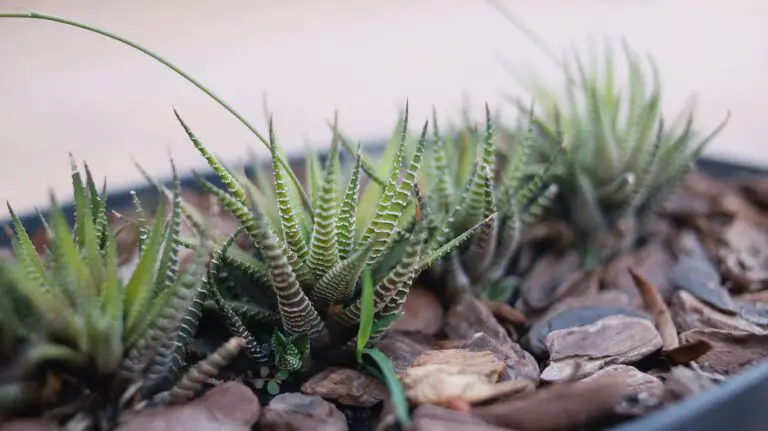
What’s the deal with propagation? Can I grow more fasciated haworthias?
Your fasciated friend can indeed multiply! If you’ve ever had that proud parent moment when your kitchen herb garden successfully grew from cuttings, you’ll love this. Just take a leaf or offset, let it callous over for a few days to avoid any oozing drama. Then, plop it into similar well-draining soil, and with patience, you’ll witness the birth of new succulent babies. It’s like a plant version of cloning—sci-fi in your own home!
Help! My haworthia’s acting weird. How do I troubleshoot?
Plants can be dramatic, and fasciated haworthias are no different. If your plant’s leaves are turning brown or mushy, it might be getting more water than a duck in a pond. Cut back on the H2O and ensure good drainage. Funky leaves? Too much sunlight. Transition it to a shadier spot as if it’s wearing sunglasses. Still troubled? It could be a pest problem. Treat them with gentle insecticidal soap as if you’re giving them a spa day—minus the candles and Enya music—succulents prefer silence while battling bugs.
Endowed with this newfound knowledge, feel empowered to become the sovereign of succulent care! Your fasciated haworthia will thrive under your watchful eye, and your home garden will be all the more extraordinary for it.
